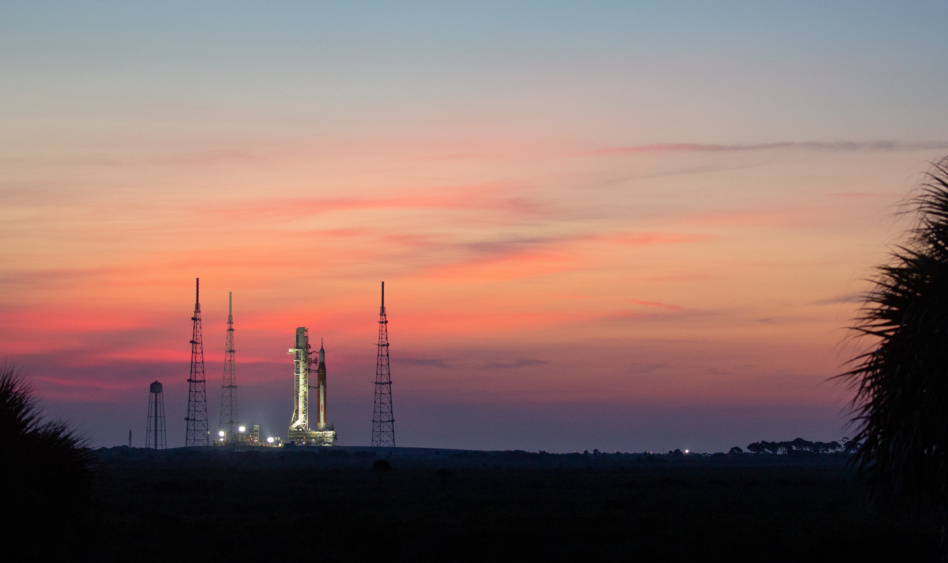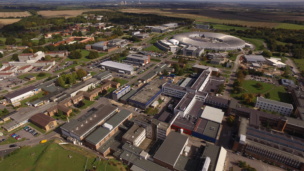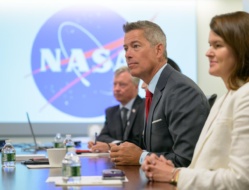We’ll be waiting a few more days for NASA’s return to the moon. This morning, SLS’ debut flight was scrubbed at T-40 minutes after a handful of weather- and engine-related delays.
Artemis I: The first mission in NASA’s Moon-to-Mars program will be an uncrewed test flight, sending the Orion crew capsule on a 42-day trip around the moon, further than any crew-rated spacecraft has traveled before.
- The crewless crew capsule is equipped with a host of test dummies and sensors that will measure the onboard conditions.
- This equipment will ensure that the flight will be safe for humans later on.
- At the end of the mission, Orion will splash down in the Pacific Ocean.
VP Harris was on site for the attempt, along with a number of celebrities who were scheduled to perform if the rocket were to launch.
Facing delays
The morning kicked off with a 45-minute delay due to thunderstorms down on the Space Coast. Tanking operations began at 1:14am ET, and both tanks on the rocket were successfully filled to 100%.
NASA identified a hydrogen leak shortly after beginning liquid hydrogen loading. After turning the hydrogen line off and on again (and manually chilling the line), loading restarted…
…until the team found that the third of four engines on the core stage was not within the temperature range required for launch. Launch controllers began funneling cryogenic fuel to engine 3 to cool it down enough, and after some troubleshooting, held the launch at T-40 minutes to discuss their options.
The hold at T-40 minutes lasted through the beginning of the launch window, at which point NASA decided to scrub the launch.
Wait for it…The next launch window opens Sept. 2 at 12:48pm ET for two hours. After that, there are daily opportunities to launch until Sept. 5. If the rocket can’t launch by then, it’ll have to roll back to the Vehicle Assembly Building to be refurbished, and we’re looking at a longer delay.




